What if we told you that you don’t need to spend, spend, spend to get a great TV? We’re betting you’d feel relieved, seeing as a number of sets cost upwards of $2,000 these days (or more). In fact, a number of the best TVs on the market are actually available for $1,000 or less, and as veteran A/V experts, we’ve gone ahead and rounded up all the best models from the best TV brands.
One great pick is the 65-inch Hisense U8G. With its unbelievable brightness levels and rich colors, fast motion capabilities, Android TV interface, and onboard support for both Google Assistant and Alexa, the Hisense U8G is the best TV for under $1,000.
The U8G is going to be a perfect choice for most people, but it’s not the only TV that provides quality at an affordable price. If you’re looking to save even more, take a look at our picks for the best 4K TV deals and the best 4K TVs under $500.
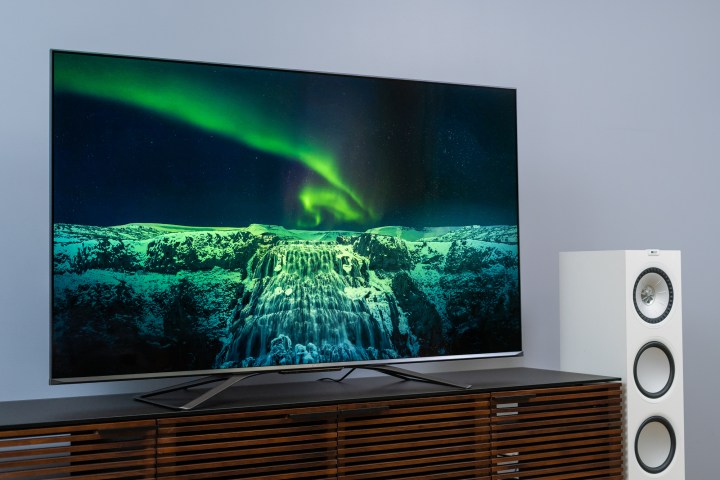
Riley Young/Digital Trends
65-inch Hisense U8G
The best TV for under $1,000
Pros
- Incredible brightness
- Excellent black levels
- Vivid, bright colors
- Good motion
- Excellent for gaming
- Great sound
Cons
- Poor off-angle picture
- Low-luminance color issue
Why you should buy this: You want the best TV you can get for under $1,000.
Who it’s for: Movie-lovers, streaming app devotees, sports fanatics, and elevated gamers.
Why we picked the 65-inch Hisense U8G:
Hisense has become an increasingly popular name in the TV marketplace, offering up some amazing sets for rock-solid prices. The 65-inch U8G delivers one of the best pictures we’ve seen yet from the company, and it’s built for nearly any kind of content you can throw at it.
Coming in at 1,500 nits, the brightness levels of the U8G are simply jaw-dropping. Normally, QLED TVs can get a little oversaturated when brightness levels get pushed, but the U8G’s 360 zones of articulate local dimming (compared to the 90 zones of the U7G) and quantum dot backbone makes for a picture that looks powerfully luminous and colorful, regardless of what content you’re watching and in what room of your home.
And thanks to the native 120Hz refresh rate, Game Made Pro, VRR support, and HDMI 2.1 on two of the TV’s four inputs, this is also one of the best sets you’re going to find for any and all next-gen gaming.
In terms of smart TV features, Hisense comes loaded with the Android TV platform, with support for Chromecast casting, as well as Google Assistant and Alexa compatibility. Whatever your streaming needs, you’re sure to have them satisfied with the U8G.
While it’s not too different from the U7G (our runner-up pick), the Hisense 65-inch U8G comes out on top in terms of picture tech, processing power, and competitive pricing.
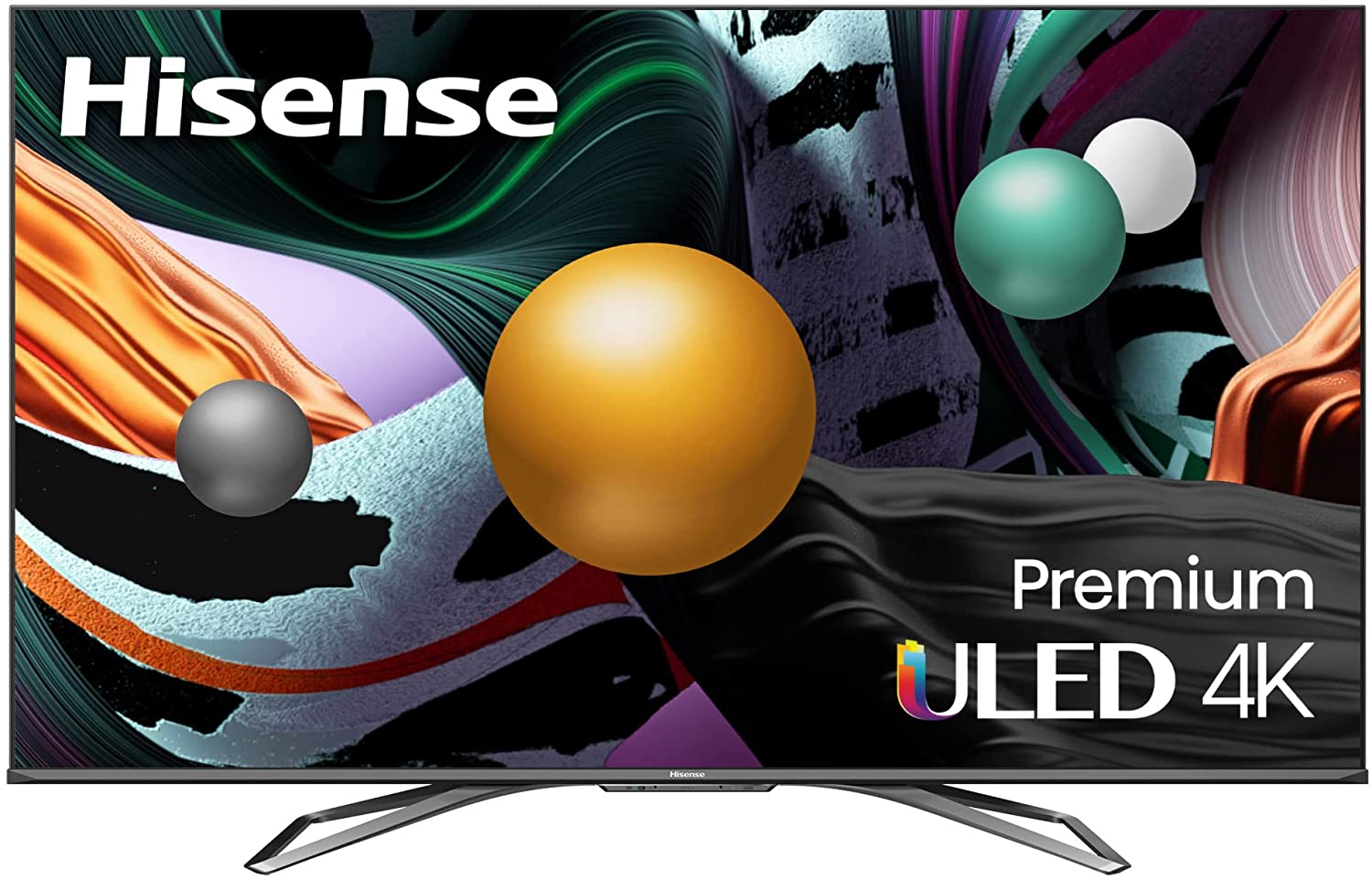
65-inch Hisense U8G
The best TV for under $1,000
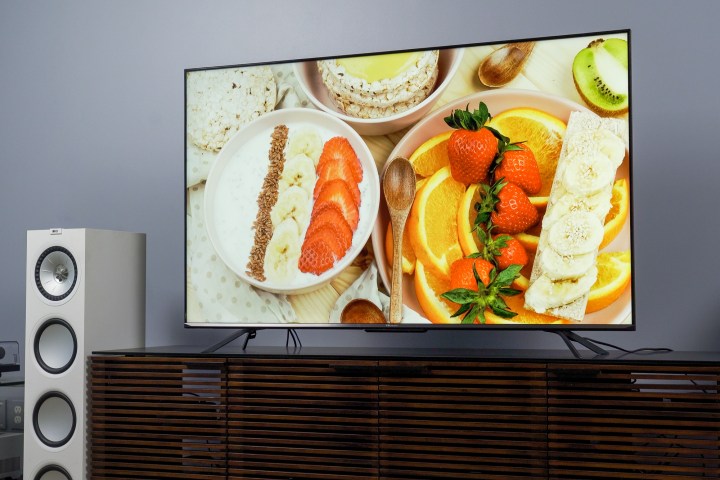
Riley Young/Digital Trends
65-inch Hisense U7G
The runner up
Pros
- Impressive brightness
- Solid black levels
- Excellent backlight control
- Great for gaming
- Easy setup
Cons
- Poor off-angle performance
- Potential dirty screen effect
Why you should buy this: You’re looking for a premium picture, unbeatable motion, and a future-proofed set for the gaming hardware of today and tomorrow.
Who it’s for: Any TV watcher, from casual evening viewers to gaming connoisseurs.
Why we picked the 65-inch Hisense U7G:
Picture-wise, Hisense has loaded the U7G with as much image tech as possible, including exclusive ULED technologies, and a suite of resolution-boosters that work with the set’s 4K panel to upscale colors, contrast, brightness, and motion. Quantum dots and accurate local dimming are some of the staples of a Hisense TV and the U7G is no exception. Be prepared for bold colors like you’ve never seen before — at least for this price.
One of the major considerations of any large-TV purchase is gaming, and rest assured, Hisense has got that covered, too. Game Mode Pro is a built-in picture preset that channels the U7G’s high-speed HDMI inputs to deliver top-notch motion, less input lag, screen jitter, and other kinds of gaming-centric distortions. Simply put, your PS5 or Xbox experience can’t get much better.
Add in Dolby Vision HDR and Dolby Atmos support, an intuitive Android TV smart interface for all your streaming needs, and Google Assistant, and it becomes clear why the 65-inch Hisense U7G is only second to the brand’s excellent U8G (our top pick).
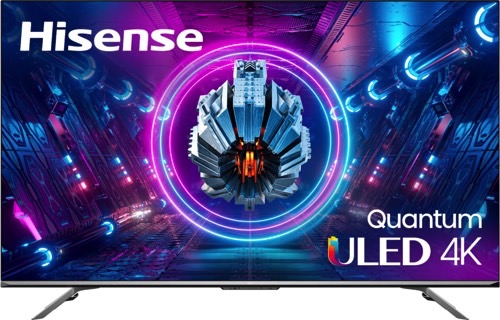
65-inch Hisense U7G
The runner up

Dan Baker/Digital Trends
55-inch TCL 6-Series
OLED-like picture for a great price
Pros
- Very good brightness
- Excellent black levels
- Sharp mini-LED backlight control
- Excellent HDR color
- THX Certified Game Mode
Cons
- Complicated picture settings
- Capped at 1440p for 120Hz games
- SDR color a bit off
Why you should buy this: It’s as close as you can get to OLED picture quality for under $1,000.
Who it’s for: Anyone looking for the best possible picture quality and features for the lowest possible price.
Why we picked the 55-inch TCL 6-Series 4K TV (2020):
Previous 6-Series models were already so good, that they completely changed our perception of the TCL brand, elevating it from so-so budget territory to the status of a genuine competitor to brands such as LG, Samsung, and Sony.
This 6-Series solidifies that reputation, largely thanks to TCL’s pioneering efforts with Mini-LED backlighting. It effectively swapped hundreds of large LED bulbs for many thousands of smaller LEDs, which gives the 6-Series the ability to control local dimming at granularity we’ve only seen once before (in TCL’s own 8-Series). To say that it improves picture quality is an understatement. It brings QLED displays closer to OLED performance for black levels and contrast than they’ve ever been before.
There’s also plenty of format support to love: Dolby Vision, Dolby Atmos, HDR10, and, of course, the excellent Roku OS running the show — they’re all here. (If you’re more of a Google TV OS person, you may want to check out the latest TCL 5- and 6-Series TVs, too) New for this model is a THX-certified gaming mode, AMD’s FreeSync variable refresh rate (VRR) technology, and auto game mode. Gaming at 120Hz is possible, but it caps at 1440p. Still, with the Mini-LED backlighting, shadow details are so good and the motion so smooth, you might not mind the lower resolution.
The Roku OS offers a ton of great features, from an intuitive interface to thousands of streaming apps. As such, it should come as no surprise to hear that it’s a one-stop-shop for live and on-demand content, providing an instant portal to the likes of Amazon Prime Video, HBO Go, Hulu, Sling TV, and Netflix, along with a wide array of lesser-known services, so you can stream to your heart’s content.
It’s compatible with both Alexa and Google Assistant should you wish to control the TV via one of these smart speakers, or you can simply use the remote’s built-in voice control. Just hit a button on the remote and you’ll be able to throw all sorts of vocal instructions its way, from commanding it to search a particular movie or show across all your preferred content providers to adjust the volume level.
Here’s a quick look at some of the commands the TCL 6-Series understands:
- “Find The Big Bang Theory.“
- “Switch over to HDMI 3.”
- “Play Designated Survivor on Netflix.”
- “Switch off after this episode of Friends.”
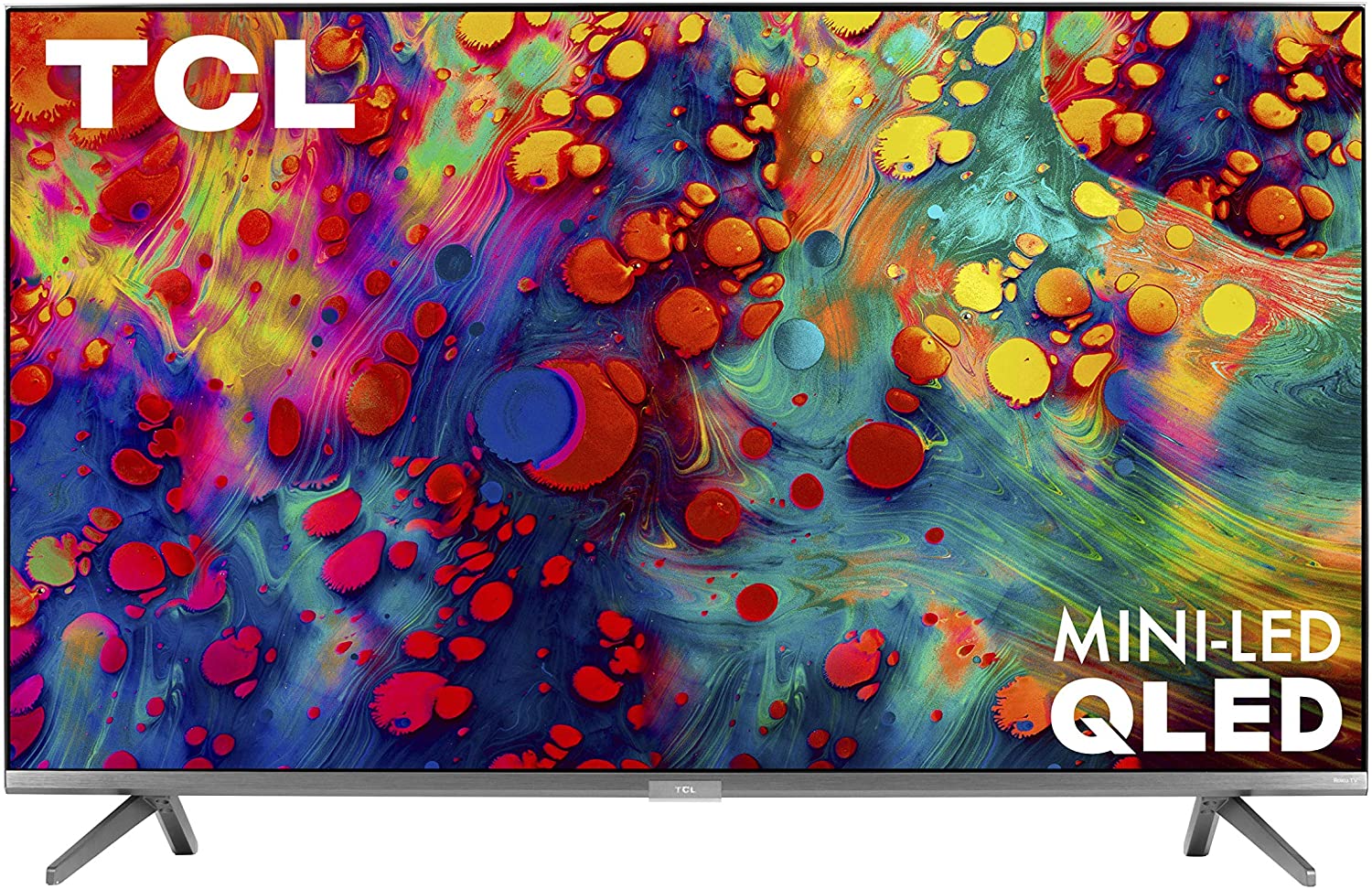
55-inch TCL 6-Series
OLED-like picture for a great price
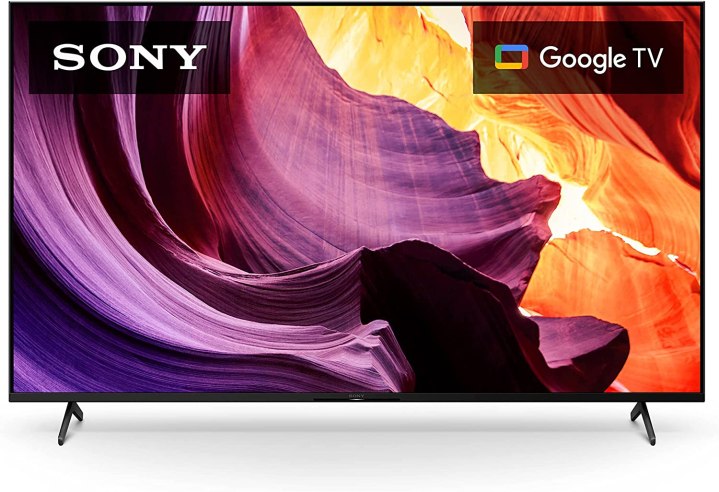
65-inch Sony X80K
The best value for size
Pros
- Great picture, great price, great size
- Excellent Google TV smart platform
- Optimized Game mode for PS5
Cons
- A lack of HDR support
- Only 60Hz refresh rate
Why you should buy this: You want a big TV that delivers a top-notch smart TV experience.
Who it’s for: Anyone looking for great picture quality, in a big size, for the most affordable price.
Why we picked the 65-inch Sony X80K Series:
The Sony X80K is available in several sizes, from as small as 43 inches, all the way up to 85 inches, so the 65-inch option seems to fit the “just right” dimensions that most folks can accommodate.
In terms of performance, the X80K is powered by Sony’s impressive X1 HDR processor, delivering a vibrant image that is packed with colors, excellent contrast, and a fair amount of brightness, too. In terms of HDR unpacking, the X80K supports Dolby Vision, leading to some of the most profound and colorful images for the price — although you won’t be getting the across-the-board HDR support of higher-priced sets.
For less than $1,000, you’re also getting one of the best smart TV platforms around — Google TV. Designed to curate and recommend content based on your typical viewing habits, Google TV is your one-stop-shop for all things Netflix, Hulu, and more, a bevy of apps that you’ll be able to control using both Google Assistant and Alexa.
Speaking of which: onboard voice assistant support means you’ll be able to raise and lower volume, switch inputs, and control your smart home gear, all without lifting a finger.
There’s even a dedicated Game mode that’s optimized to deliver the best-looking picture for PS5 gaming. And while the X80K only manages a 60Hz refresh rate across all inputs, don’t let that get in the way of all its other accolades.

65-inch Sony X80K
The best value for size
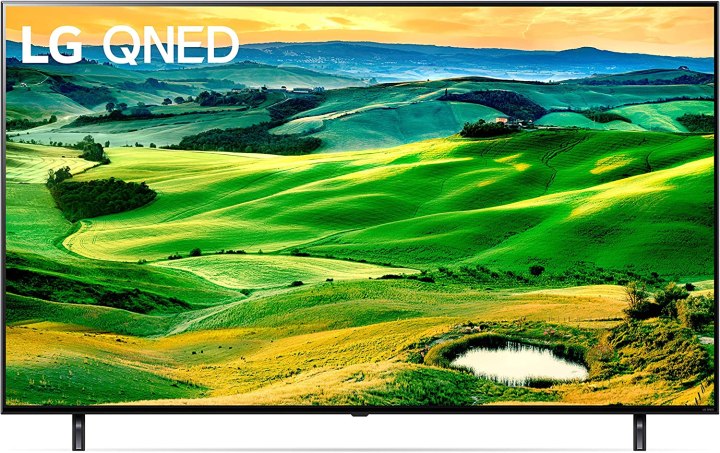
55-inch LG QNED80
Xbox and PlayStation optimized
Pros
- Excellent color and contrast for the price
- AMD FreeSync for gamers
- Local dimming capabilities
- Two HDMI 2.1 inputs
- Supports multiple voice assistants
Why you should buy this: It has console-friendly features and great local dimming capabilities.
Who it’s for: Gamers who want the best results for under $1,000.
Why we picked the LG 55-inch QNED80 Series:
It’s not often you come across a TV that’s tailor-made for gamers, especially one for under $1,000, which makes the LG QNED80 Series quite the rare gem.
Right off the bat, the beating heart of the QNED80 is delivered full force by LG’s incredible a7 Gen 5 AI processor. In terms of 4K picture upscaling, color volume, and brightness, the a7 more than gets the job done, making for an all-around excellent picture (especially when you consider the price).
And in terms of gamer specifics, the QNED80 features two HDMI 2.1 inputs, FreeSync Premium, LG’s built-in Game Optimizer, and a native 120Hz refresh rate for lightning-fast response times. There’s even an integrated gaming dashboard that gives you an instant readout of vital picture specs like frame rate, latency levels, and more.
Running a smart home? With support for Alexa, Google Assistant, and HomeKit, you’ll be able to control and manage a number of your devices using the QNED80, on top of using the voice profiles to soar through LG’s WebOS smart features.

55-inch LG QNED80
Xbox and PlayStation optimized
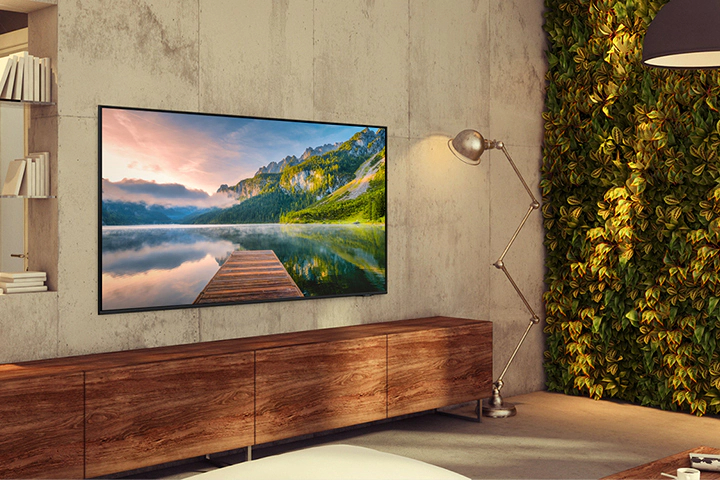
65-inch Samsung AU8000
The best for 4K upscaling
Pros
- Great price
- Impressive upscaling, colors, and contrast
- Excellent anti-reflection screen
Cons
- Lacks HDMI 2.1
- No VRR or local dimming
- Poor off-center viewing
Why you should buy this: Those who want to save without skipping on resolution upgrades.
Who it’s for: Those looking to buy into the Samsung lineup that don’t want to spend more than $1,000.
Why we picked the Samsung 65-inch AU-8000 Series:
Along with Sony and LG, Samsung continues to dominate amongst the biggest names in TVs. While a number of the brand’s sets are well over $1,000, the UN65AU8000 delivers a pretty impressive picture for under $700.
Image quality is one of the top laurels of the AU8000, with Samsung’s Dynamic Crystal Color processing delivering a rich and sharp picture that looks particularly great during dark scenes. Upscaling is another big win here, with the Crystal Processor 4K doing an exceptional job at up-converting standard HD content to as close to UHD levels as possible.
Running an upgraded version of Samsung’s 2020 Tizen OS, smart TV fans will find the best of the streaming basics on the AU8000, featuring apps like Netflix, Hulu, and Disney+, along with built-in support for popular voice assistants like Alexa, Google Assistant, and Samsung’s Bixby.
Now let’s unpack some of the lesser points of this 2021 set.
For starters, this is technically considered a budget-tier Samsung TV, which means there are a few key features missing from the fold — notably, a lack of HDMI 2.1 inputs or Variable Refresh Rate (VRR) for the gamers of our readership.
And while overall colors, contrast, and upscaling score high, the VA panel design starts to suffer when it comes to off-center viewing.
It may not be Samsung’s most advertised triumph of 2021, but if you’re looking to buy into the brand without crossing the $1,000 threshold, the Samsung UN65AU8000 is a great place to start.

65-inch Samsung AU8000
The best for 4K upscaling
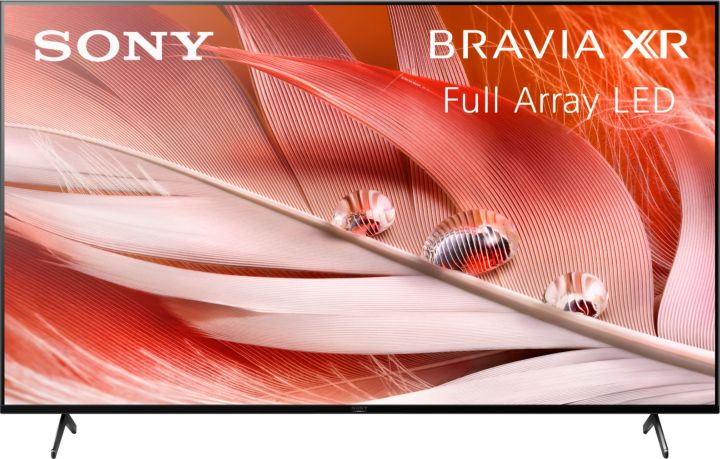
55-inch Sony X90J
The best for HDMI 2.1
Pros
- Rich and vibrant colors
- Stellar 4K upscaling
- HDMI 2.1-enabled
Cons
- Doesn’t hold up well against glare
Why you should buy this: It has powerful upscaling capabilities and HDMI 2.1.
Who it’s for: People looking for a premium picture at an affordable price.
Why we picked the Sony 55-inch XR X90J Series:
Sony’s Cognitive Processor XR is a powerhouse when it comes to delivering visuals that are bar-none some of the best we’ve seen on any TV under $1,000. The internal processor is a master of calibrating imagery to bring it as close to lifelike as possible, a great feature only bolstered by the inclusion of Sony’s Triluminos Pro Color and full-array lighting.
On top of 4K upscaling, the XR X90J is a titan when it comes to smart features, too. Google TV is the platform you’ll be using here, and there’s plenty of awesome content to stream, including must-have apps like Netflix, Hulu, Disney+, and more. There’s even a built-in microphone on the remote to use Google Assistant to search for shows and movies (internet connection required).
This is also a great TV for gamers, with the inclusion of an HDMI 2.1 input (measured at 4K/120 frames per second) that future-proofs the entire TV for next-gen gaming. While the TV has some struggles when it comes to contending with ambient lighting and off-axis viewing, the Sony 55-inch XR X90J is still an awesome option overall.
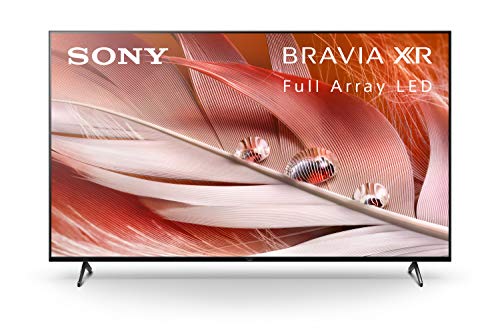
55-inch Sony X90J
The best for HDMI 2.1
Frequently Asked Questions
What size TV can I afford for $1,000?
You’ll be able to find a TV as large as 75 inches for under $1,000.
Can I get an OLED TV for less than $1,000?
Yes, but very rarely with deals. OLED TV technology still is primarily available on high-end models that soar beyond the $1,000 mark. But we’re starting to see some models dip below a grand.
Can I use an HDTV or 4K TV with a PC?
Yes, as long as your computer has an HDMI output. If not, you can try using an adapter, but adapters usually don’t transmit audio.
Do TVs under $1,000 work with Alexa, Google Assistant, or Siri?
Using either Google Home, Fire TV, or an Amazon Echo, you can pair many modern TVs with Google Assistant and Amazon Alexa. Many newer TVs have these options built-in, so you can use them without buying a separate appliance. Unfortunately, no current models of TVs have Siri built-in, so you’ll have to try a workaround. For example, TVs that support AirPlay 2 and HomeKit let you control them by using Siri on an iOS device, such as an iPad, iPhone, iPod, and Mac.
What outputs should TVs under $1,000 have?
The No. 1 thing to consider is HDMI in terms of outputs and inputs. We recommend purchasing a TV with HDMI ARC, which means your TV audio can stream to an A/V receiver or a soundbar. Every TV we’ve included on this list has at least one HDMI ARC post, and most have three total HDMI posts. This means you’ll have plenty of image and audio channels available to connect gaming consoles, Blu-ray players, and set-top streaming devices to your system. Getting the latest generation of HDMI is also important for enabling the latest visual/audio options.
What is the best month to buy a TV?
Let’s get the obvious out of the way — Black Friday and the surrounding holidays tend to have the best deals for things like TVs, so November and December are clear choices. But if you missed a deal or it ran out of stock, these can also be annoying months to buy. We suggest also looking for deals in January when brands discount in preparation for the Super Bowl, and in April and May when many TVs go on sale.
Which TV brands last the longest?
With proper care, TVs can last for many years. But Samsung and LG have particularly good reputations for durable TVs that can handle long-term use without developing annoying issues like damaged pixels, while still offering top-notch quality. Check out our excellent post on the best TV brands for more detail.
Editors’ Recommendations
Credit: Source link


Comments are closed.